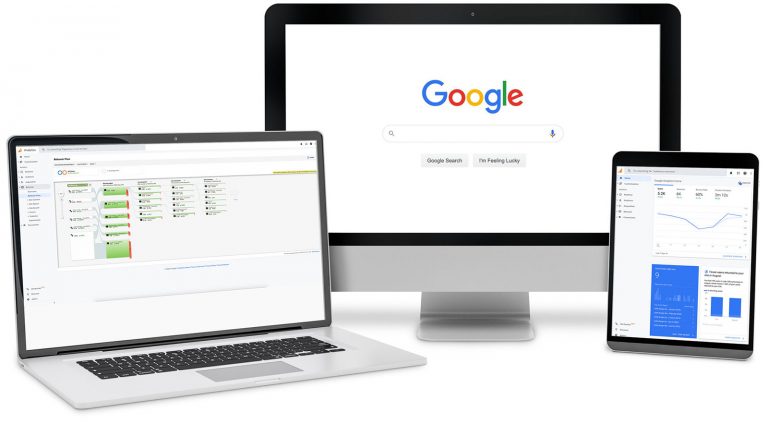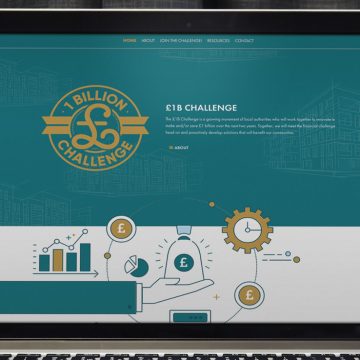Kelsey and the team far exceeded my expectation. From start to finish everything was easy. Everyone is so accommodating to my request/changes and sometimes inability to decide what direction I’m going in. I will be using them for all of my future projects.
Let our team of WordPress experts make sure your website is set up for search engine success.
Our technical on-page SEO specialists are here to help.

These elements are foundational, as all other SEO tasks depend on them.
Foundation first: SEO basics
We build SEO into the DNA of ALL our websites. Here’s what that means:
SEO optimization for WordPress
All websites undergo a WordPress search engine optimization audit by our WordPress SEO experts to ensure you are fully optimized for Google search.
WordPress search engine optimization experts
WordPress SEO optimization optimization results you can see and track
Our SEO digital agency team will work through each phase of our WordPress SEO program to ensure that your SEO is yielding results for your website.
- Strategic direction & analysis
The first phase of our process is Strategic Direction & Analysis. In this phase we will learn all about your goals and objectives, discuss target audience, and possible keywords. This will help us get an overall picture of your company, goals, and the direction to lead in. - Keyword research & development
In the keyword research & development stage we will take all of our notes and discussions to determine what keywords will be best to use for your site. We will use keyword research tools to provide statistics and numbers on certain keywords and find which words could be best for your business to rank for. With your approval of the keywords we will be ready to move to the next stage. - Total on-page website optimization
In this phase we will begin incorporating the keywords into your site. From adding keywords into our SEO platform to making sure that the front end of your site is keyword friendly. We will optimize your website with a full on-page SEO audit. - Tracking & reporting configuration
Once your full SEO is completed for your website we will set up all tracking and reporting. This will help us understand how your website is ranking, what keywords are performing well and all of the metrics related to your website. Our team will also send a copy of your analytics report to you so you can review and keep track of how things are performing and progressing.
WordPress SEO add-ons
We also offer a variety of different add-ons
Sometimes basic search engine optimization for WordPress may not be all you need. We’ve got you covered with additional search engine optimization offerings to bring your WordPress website to the next level, and help your business stand out from the rest.
We’re happy to mold our WordPress & WooCommerce SEO company and digital marketing efforts into a package that fits your business needs now, and well into the future.
WordPress & WooCommerce SEO expert
World’s most powerful website platform, fully drag and drop, simple to update, easy to maintain.
300+ 5-star Google reviews
Very responsive and they made everything easy. We were able to get our site up quickly and it looks great! If you are looking for a WordPress development agency, I highly recommend Freshy!
SEO FAQs
Freshy’s ‘On-Page SEO’ process gives your website the foundational tools for high visibility and successful ranking for your target keywords, key phrases and/or locations.
This process involves incorporating your target keywords, key phrases and/or locations into the page title tags and meta descriptions on the back-end of your website. These tags are what search engines read on websites to better understand the content on that page and more accurately index it, thus serving it to the right searchers when needed.
These page title tags and meta descriptions are also optimized with the correct wording and structure for searchers according to SEO best practices and additional search engine tools.
One such tool is Google Keyword Planner, which allows users to view the monthly search volume on Google for certain keywords and key phrases.
Google, and other search engines, prioritize businesses, organizations, etc. that they have a lot of consistent information online for, particularly NAP (Name – Address – Phone Number) information. Google finds this digital information about your business or organization at critical websites with proper categorization and descriptions.
Freshy’s ‘Local SEO’ process involves claiming and optimizing (or creating and optimizing) your Google My Business profile, which is a listing on Google that includes your business or organization name, address, phone number, hours, website and so forth.
We then use that verified, optimized listing to create additional listings, with accurate N-A-P information about your business, organization, etc., on verified aggregator and additional trusted websites. It takes roughly 4-6 weeks from submission date for these listings to go live online.
There could a variety of reasons your website isn’t ranking well for your chosen keywords, key phrases and/or target location.
It’s important to ensure your website is structured properly with clear and concise content – building your website with Freshy is a guarantee than your website is structured properly because we build with a known search-engine-friendly platform called WordPress – and has the foundational on-page SEO tools implemented and running.
These are essential for a website to rank well on Google and other search engines.
We personally put timing at 18 months for a website to be ranked where it’s wanted to be. This isn’t an overnight process. It takes time and not only depends on how competitive a business or organization’s online industry space is, but also the implementation of a continuous and holistic digital marketing program on the part of the business.
At Freshy, we always recommend continuous, holistic digital marketing efforts to increase your website’s visibility, including:
- Updating the content on your website with consistent blog posts.
- Creating basic social media profiles & continuously posting on various social media channels.
- Implementing email marketing with periodic blasts.
- Utilizing PPC (Pay-Per-Click) Google Ads.
- Ensuring your clients review your business or organizations on Google, Yelp, Facebook, etc.
- Having other businesses you’ve done work for, collaborated with on events, etc. give you a shout-out on their own website and provide an inbound link to your website and beyond.
Of these, the most important thing you can do to improve your ranking is update the content on your website with consistent blog posts.
When websites are first launched, and every time their content is updated, they are crawled by ‘search engine crawlers.’ Every time you post a blog to your website, that site is re-crawled, becomes more valuable for your target keywords or key phrases and thus, increasing its visibility over time.
There could a variety of reasons your website isn’t showing up on Google at all for your chosen keywords, key phrases and/or target location.
This could depend on how recently your website was launched — new websites can take up to 2 weeks to show up on Google — as well as how highly trafficked your website is.
You can always re-submit your website URL (just search ‘Add my website to Google’) if it’s been more than 2 weeks. However, this isn’t a guarantee that your website will show up.
There are a variety of things Freshy can do for clients who want their website to rank better, including:
- Implementing on-page or local SEO (if those weren’t part of your original website scope)
- Re-auditing your website for a more refined list of targeted keywords
- Adding keyword-focused landing pages to your website and more.
Contact us so we can recommend the best path forward for your website.
After implementing on-page and local SEO tactics, it will take roughly 4-8 weeks for your website, and Google listing, to begin ranking well.
It depends on your business, organization, etc., as well as your overall SEO goals.
For example, if you’re not looking for your business to make a digital footprint in your local community — maybe your prospective clients are out of the region or country — on-page SEO would likely better achieve what you’re looking to do, if you just want your website optimized for your specific service keywords, rather than a set location.
That being said, our on-page and local SEO processes are both extremely valuable on their own, but are more effective when paired together to improve your website’s overall visibility and ranking online, as well as the credibility of your business or organization.
Google Analytics is a tool you can use to better understand how much activity is going on on your website and where that activity is happening. It also allows you to gauge who your visitors are, where they’re coming from, what pages of your website they’re visiting most, what actions they’re taking on your website and so forth.
The way Google can capture all this data is through a tracking code (also called a UA code) implemented on the back-end of your website.
To log into Google Analytics, you just need to go to analytics.google.com. Once you log in and get the hang of navigating it, you’ll be able to see all sorts of data and metrics about your website’s traffic.
As an overview, here are some of highlights and explanations for the most valuable data to look at for your website (and where to find these metrics, create reports, etc.):
General Traffic Overview – A high-level overview of your site’s audience for a given time period
- Go to the left-hand toolbar, then Audience then Overview
Landing Pages – The pages your visitors first enter on your site
- Go to the left-hand toolbar, then Behavior, then Site Content, then Landing Pages
Acquisition – Where your visitors are coming from (a search engine, social media, etc.)
- Go to the left-hand toolbar, then Acquisition, then Overview
Active Users – How many users are on your site in 7, 14 and 28-day periods
- Go to the left-hand toolbar, then Audience, then Active Users
Audience – How large your user pool is and where those users are located geographically
- Go to the left-hand toolbar, then Audience, then Geo, then Location
Behavior Flow – The pattern of behavior your users take on your site
- Go to the left-hand toolbar, then Behavior, then Behavior Flow
Pageviews – Which pages are being visited the most by visitors
- Go to the left-hand toolbar, then Behavior, then Site Content, then All Pages
Source/Medium Traffic – How many visitors are coming from which source (a search engine, direct URL, social media, etc.)
- Go to the left-hand toolbar, then Acquisition, then All Traffic, then Source/Medium
You can adjust the dates when viewing data for these different metrics by clicking into where the dates are shown in the upper right-hand corner.
You can also create reports for the data you’re viewing by clicking ‘Export,’ which is also in the upper right-hand corner, and will create a PDF of the screen you see when viewing the reports.







